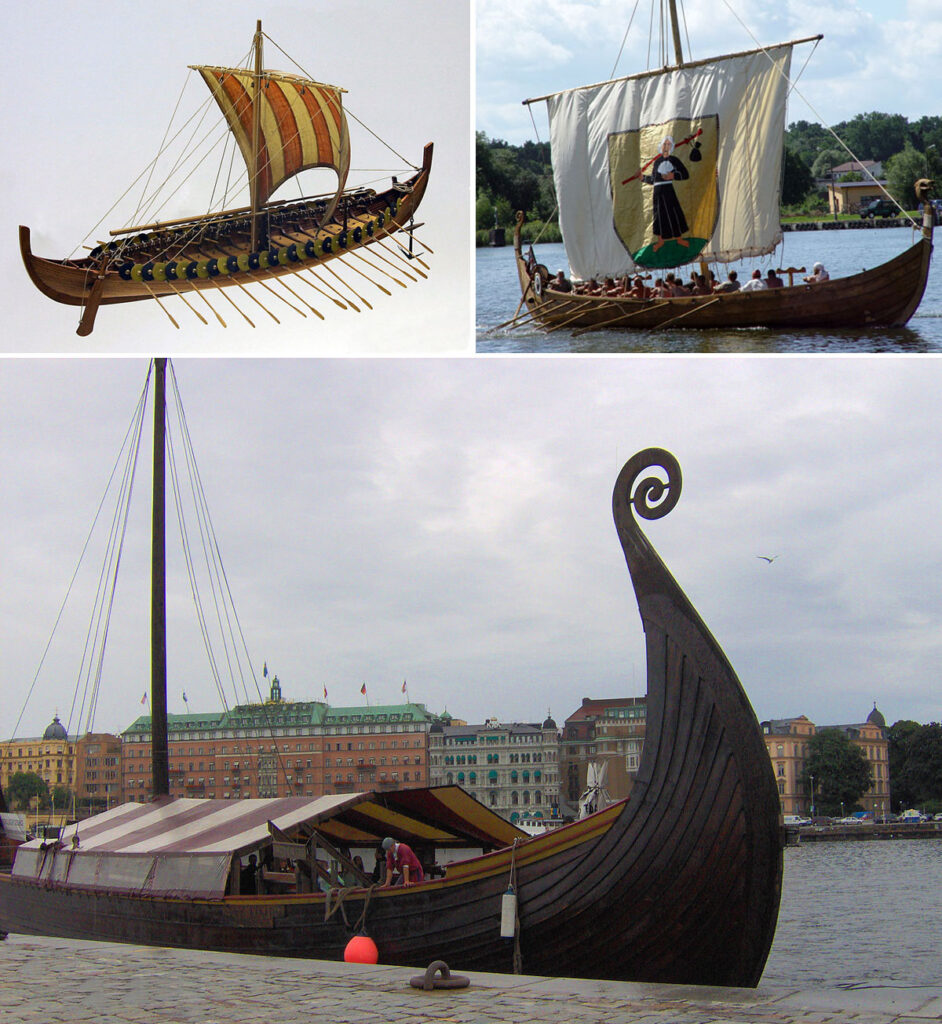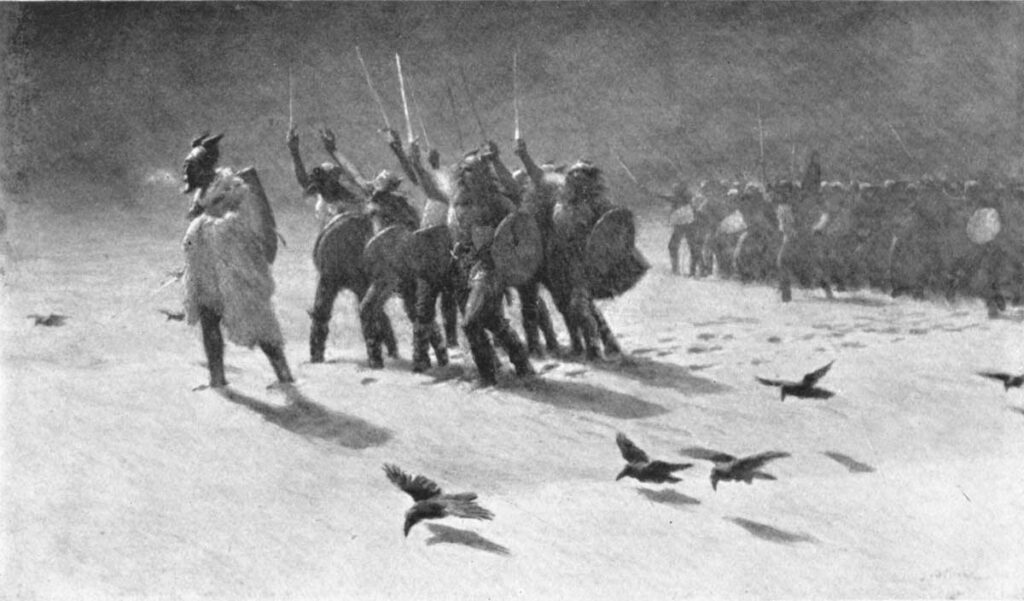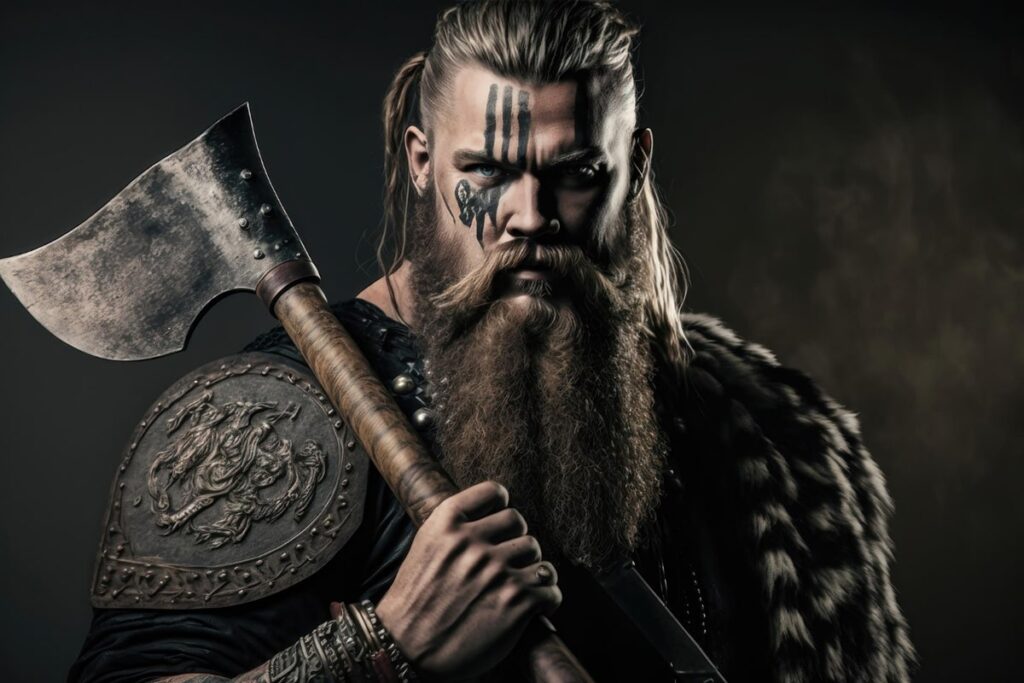- The Viking Age: The Viking Age lasted from 793 to 1066. These relatively precise dates are linked to certain events that historians believe mark the beginning and end of the Viking Age: the sacking of the monastery at Lindisfarne in northern England in 793 and the Battle of Hastings in 1066 in southern England
- Vikingr: The Old Norse word for Vikings is ‘Vikingr’. The term covers not only the famous Viking warriors, but also traders and explorers from the Nordic countries of the time. Settlers from the North who settled in other countries (such as England and France) went by other names
- Raids: Most of the Viking raids took place in towns, monasteries and the like near the coasts because they preferred to stay close to their mobile longships. The majority of raids took place in the North Atlantic, but some Vikings traveled all the way to Russia, North Africa and the Middle East
- Longships: The Vikings were known for their fearsome longships, also known as “dragon ships” because they were typically decorated with a dragon’s head on the bow. Longships were narrow and flat-bottomed, which made them fast. They were also able to navigate shallow waters such as coasts, rivers and streams, which was a distinct advantage on raids and in war. The ships had crews of between 30 and 60 men and modern reconstructions show that they could travel at speeds of up to 20 km/h
- Dane debt: The Vikings offered the English and French in particular a special favor: peace for a price. Once the payment was made, the Vikings would leave on a raid or return home. The peace was short-lived, however, as other Vikings would typically hear about the payment and try their luck. The amounts collected by the Vikings increased significantly over time; the first Danish debt payment was around 100-200 pounds in Kent, England in 865. The largest Danish debt was levied in 1018, when Viking King Canute the Great agreed to disband his fleet in exchange for a payment of 82,500 pounds
- Slave traders: During their raids, the Vikings often captured young men and women and used them as slaves. Vikings also sold their slaves in the large slave markets of Europe and the Middle East
- Settlements: Many of the Norse in the Viking Age chose to travel and settle abroad. Most settled on various islands in the North Atlantic, England, France, Russia and modern-day Turkey. Others reached deeper into Europe and some even far into Asia
- Religion: The Vikings were followers of the traditional Norse religion, which today is also known as Norse mythology and is worshipped by some in the form of Ásatrú. Norse religion was centered around gods such as Odin, Thor, Loki and Freyja. For the Vikings, the focal point of the religion was the noble destiny of dying in battle to secure a place in Valhalla, where you would take part in the battles leading up to Ragnarok – the end of the world. The Norse religion existed from around 700 to 1300 and was gradually replaced by Christianity, which was introduced over time by various missionaries from the rest of Europe
- Cleanliness: The Vikings were described as very clean by the English and others because they bathed once a week and also made a point of always combing their hair
- Runner: The runic alphabet was used by Vikings as well as some Germanic tribes and originated in the 2nd century AD. Runes were developed independently of the Latin alphabet and only came under its influence in the Middle Ages. Overall, runes were used for around 1200 years – until the 15th century. The runic alphabet is also called ‘Futhark’ because its first 6 characters sound like the letters f – u – th – a – r – k

Here you can see different longships: a model (top left), a Polish reconstruction (top right) and a Swedish reconstruction (bottom)
Myths about Vikings
- Helmets with horns: Vikings did not have horns on their helmets. The idea that they had horns on their helmets dates back to the 19th century, when romanticized and nationalistic notions of Vikings became popular. Another persistent myth in this regard is that English and French monks – whose monasteries were raided by Vikings – depicted Vikings with horns on their helmets to make them appear more devilish; this is also untrue
- Barbarian warriors: Far from all Vikings were savage, seafaring warriors. Rather, the prototype of a Viking was someone who contributed to the local community through their profession as a farmer, blacksmith, trader, etc.
- Funeral: A ‘Viking funeral’ is for most people synonymous with a burning boat sailing out to sea, but in reality, Viking burials took many different forms. Exactly which funeral each Viking received depended largely on the status of the deceased (for example, the Viking chieftain was buried differently to the slave) as well as local traditions and decisions. The most common burials have been earthen graves, cremation burials, barrows and ship burials. The latter two, however, were undoubtedly reserved for the more powerful people. Vikings almost always used grave goods (grave goods), which probably had a cultic significance or connection to the deceased Viking’s profession. Sometimes they also placed memorial stones (with and without runes), which could also serve as empty tombstones for people who had drowned in the sea, died abroad, etc.

Fact: The Vikings were feared throughout Europe for their relentless raiding. They primarily attacked the coastal areas of England and France, but also reached as far as North Africa, the Middle East, Russia and into Asia





